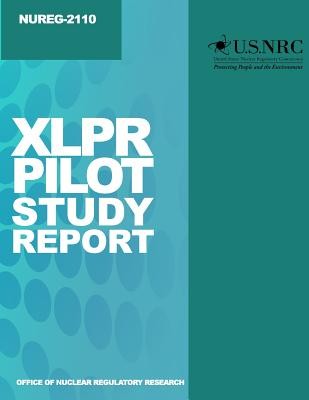
- We will send in 10–14 business days.
- Author: U S Nuclear Regulatory Commission
- Publisher: CreateSpace Independent Publishing Platform
- Year: 2014
- Pages: 78
- ISBN-10: 1499606583
- ISBN-13: 9781499606584
- Format: 21.6 x 28 x 0.4 cm, softcover
- Language: English
- SAVE -10% with code: EXTRA
Reviews
Description
Under the auspices of an addendum to the memorandum of understanding between the Electric Power Research Institute and the U.S. Nuclear Regulatory Commission's Office of Nuclear Regulatory Research for cooperative research, a pilot study has been completed to evaluate the feasibility of developing a fully probabilistic, fracture-mechanics-based computational tool to evaluate the rupture probability of reactor coolant piping. This project, known as xLPR for Extremely Low Probability of Rupture, is initially focused on evaluating pipe rupture probabilities within Alloy 82/182 dissimilar metal welds located in lines licensed for leak-before-break (LBB) as allowed under General Design Criterion 4, "Environmental and Dynamic Effects Design Bases," of Appendix A, "General Design Criteria for Nuclear Power Plants," to Title 10 of the Code of Federal Regulations Part 50, "Domestic Licensing of Production and Utilization Facilities." The current LBB regulatory basis does not allow for assessment of piping systems subject to active degradation mechanisms, such as primary water stress-corrosion cracking, which has been detected in some systems that have been granted LBB approval. Although the piping systems susceptible to this type of corrosion have been shown through deterministic arguments to comply with the regulations, no fully probabilistic tool currently exists to directly assess this compliance.
EXTRA 10 % discount with code: EXTRA
The promotion ends in 18d.22:11:56
The discount code is valid when purchasing from 10 €. Discounts do not stack.
- Author: U S Nuclear Regulatory Commission
- Publisher: CreateSpace Independent Publishing Platform
- Year: 2014
- Pages: 78
- ISBN-10: 1499606583
- ISBN-13: 9781499606584
- Format: 21.6 x 28 x 0.4 cm, softcover
- Language: English English
Under the auspices of an addendum to the memorandum of understanding between the Electric Power Research Institute and the U.S. Nuclear Regulatory Commission's Office of Nuclear Regulatory Research for cooperative research, a pilot study has been completed to evaluate the feasibility of developing a fully probabilistic, fracture-mechanics-based computational tool to evaluate the rupture probability of reactor coolant piping. This project, known as xLPR for Extremely Low Probability of Rupture, is initially focused on evaluating pipe rupture probabilities within Alloy 82/182 dissimilar metal welds located in lines licensed for leak-before-break (LBB) as allowed under General Design Criterion 4, "Environmental and Dynamic Effects Design Bases," of Appendix A, "General Design Criteria for Nuclear Power Plants," to Title 10 of the Code of Federal Regulations Part 50, "Domestic Licensing of Production and Utilization Facilities." The current LBB regulatory basis does not allow for assessment of piping systems subject to active degradation mechanisms, such as primary water stress-corrosion cracking, which has been detected in some systems that have been granted LBB approval. Although the piping systems susceptible to this type of corrosion have been shown through deterministic arguments to comply with the regulations, no fully probabilistic tool currently exists to directly assess this compliance.


Reviews